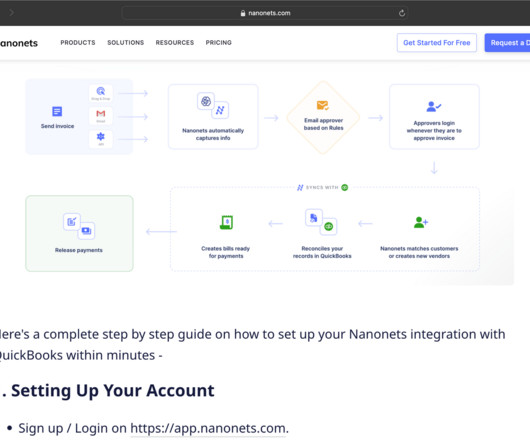What is Month End Reconciliation? Guide & Best Practices
Nanonets
JANUARY 31, 2024
Month-end close is a widely accepted accounting standard that is aimed at keeping an accurate set of financial records and detecting errors/fraud. Month-end reconciliation is the most important part of the month-end close process. It involves recording, reviewing, and reconciling records at the end of every month.












Let's personalize your content